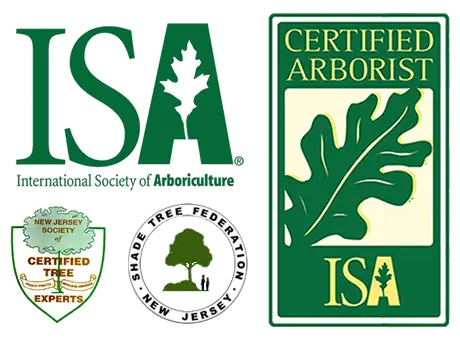In This Article ...
It's Christmas Tree Season Once Again!

In the heart of Monmouth County, NJ, spanning towns from Middletown to Atlantic Highlands, Highlands, and Long Branch, the tradition of finding, putting up, and decorating the perfect Christmas tree is a cherished family affair. This annual ritual, eagerly anticipated as the winter chill sets in, is more than a festive activity – it’s a heartwarming display of community spirit and familial bonding. Families embark on a joyous quest to local tree farms or markets, each member playing a part in selecting a tree that captures their collective spirit. It’s a time of excitement and nostalgia, where the hunt for the tree becomes a shared adventure, weaving together the dreams of children and the cherished memories of adults.
Bringing the tree home marks the beginning of a delightful family teamwork experience. Setting up the tree, often accompanied by friendly debates and storytelling, fosters a sense of unity and continuity. It’s a moment where generations come together, sharing tales and traditions, all while creating new memories. The tree, once standing, becomes more than a holiday decoration; it symbolizes the shared love and effort of the family.
The magic culminates in the decorating of the tree. As the communities of Monmouth County unwrap their ornaments – heirlooms laden with history and newly made crafts alike – each decoration adds to the tapestry of family heritage. The act of adorning the tree with lights and ornaments is a serene, joyful activity, uniting families in a moment of peace amid the busy season. The tree, glowing with lights and memories, stands as a testament to the enduring spirit of tradition, love, and community connection that thrives across these New Jersey towns.
The Perfect Christmas Tree: A Comprehensive Guide
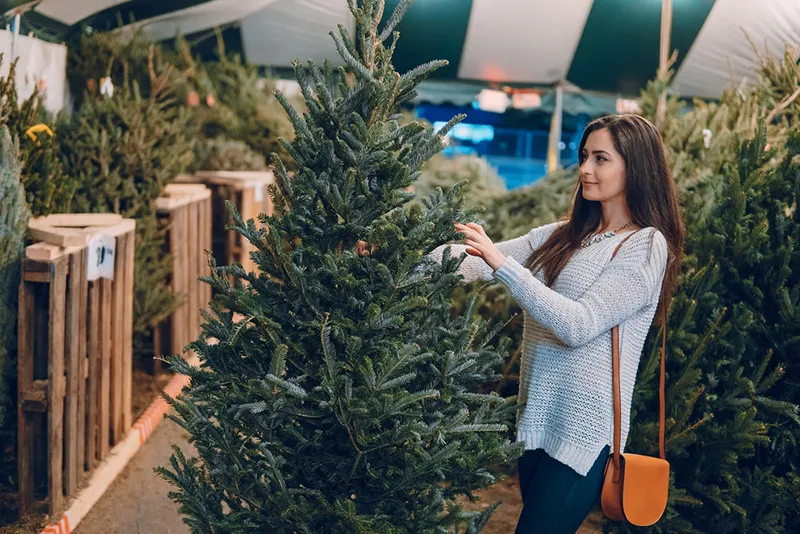
As the holiday season rolls in, the quest for the perfect Christmas tree becomes a cherished activity for many families. At Hufnagel Tree Service, we’re not just experts in tree care; we’re enthusiasts about bringing the spirit of the season into your homes with the perfect Christmas tree. Let’s dive into a detailed guide to help you select a tree that captures the essence of Christmas.
Understanding Different Types of Christmas Trees
Fraser Fir
Renowned for its dark green needles and pleasant scent. Its sturdy branches make it ideal for hanging heavy ornaments. Plus, it has excellent needle retention, ensuring a long-lasting festive look.
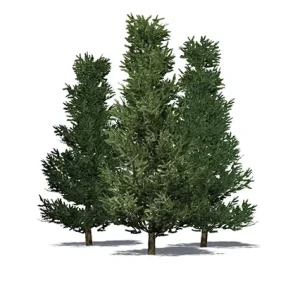
- Ideal Needle Retention: Fraser Fir trees are renowned for their excellent needle retention, which means fewer fallen needles and a cleaner, more manageable holiday experience.
- Pleasant Fragrance: These trees emit a mild, sweet aroma, adding a subtle and delightful scent to your holiday decor.
- Strong Branches: The branches of the Fraser Fir are sturdy and robust, making them ideal for holding a variety of ornaments, from lightweight baubles to heavier heirloom decorations.
- Compact and Narrow Shape: Fraser Firs typically have a classic, conical Christmas tree shape that is more compact and narrower than other types, making them a great choice for smaller spaces.
- Soft, Dark Green Needles: The needles of a Fraser Fir are soft to the touch, reducing the discomfort of prickly needles, and they boast a rich, dark green color that enhances their visual appeal.
Douglas Fir
This type sports soft needles and a sweet aroma. Its bushy appearance offers a full-bodied look, making it a family favorite, especially in homes with young children.

Native Range: Douglas Fir trees, scientifically known as Pseudotsuga menziesii, are native to the western United States and Canada, thriving in regions from British Columbia down through California.
Lifespan and Size: These trees can live for hundreds of years, with some specimens over 1,000 years old. They can grow remarkably tall, often reaching heights of 70 to 250 feet in their natural habitat.
Needle Characteristics: Douglas Fir needles are soft to the touch, generally measuring about 1 to 1.5 inches in length. They radiate in all directions from the branch, giving the tree a full, lush appearance.
Popular Christmas Tree: The Douglas Fir is one of the most popular Christmas trees in the United States, appreciated for its pleasant fragrance, attractive pyramid shape, and the way its branches sag slightly under the weight of ornaments.
Environmental Importance: Apart from its use as a Christmas tree, the Douglas Fir plays a crucial ecological role. It’s a key species in its native ecosystems, providing habitat for wildlife and contributing to forest biodiversity.
Balsam Fir
If you’re looking for that classic Christmas tree silhouette with a strong fragrance, this is your go-to tree. Its conical shape and dark green color add to its traditional appeal.
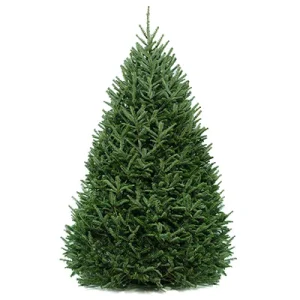
- Pleasant Aroma: Balsam Fir trees are well-known for their distinct and refreshing fragrance, which is often associated with the quintessential smell of Christmas.
- Traditional Appearance: These trees feature a classic conical shape, with dense, dark green needles, making them a popular choice for a traditional Christmas tree aesthetic.
- Needle Retention: Balsam Firs are appreciated for their excellent needle retention, ensuring that the tree remains lush and minimizes needle drop throughout the holiday season.
- Ideal for Cold Climates: Originating from the northeastern United States and Canada, Balsam Firs are well-suited to colder climates, thriving in cooler temperatures and snowy conditions.
- Wildlife Habitat: In their natural habitat, Balsam Fir trees provide shelter and food for various wildlife, including birds and small mammals, playing an important role in their ecosystems.
Noble Fir
Known for its beautiful symmetry and firm branches, the Noble Fir is the epitome of a majestic Christmas display. It also has superb needle retention.
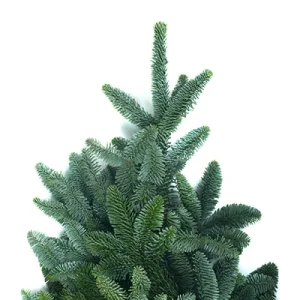
- Long-Lasting Freshness: Noble Fir trees are known for their excellent needle retention, ensuring they stay fresh and vibrant throughout the holiday season.
- Strong Branch Structure: With sturdy and evenly spaced branches, Noble Firs are ideal for holding a variety of ornaments, including heavier decorations.
- Unique Blue-Green Needles: The tree is distinguished by its beautiful blue-green needles, which are not only visually appealing but also have a pleasant, mild scent.
- Tall and Symmetrical Shape: Noble Firs often grow tall and maintain a naturally symmetrical shape, making them a visually appealing choice for a classic Christmas tree.
- Eco-Friendly Option: Often grown in sustainable tree farms, Noble Firs are an environmentally responsible choice, contributing to biodiversity and carbon sequestration.
How To Choose The Best Christmas Tree
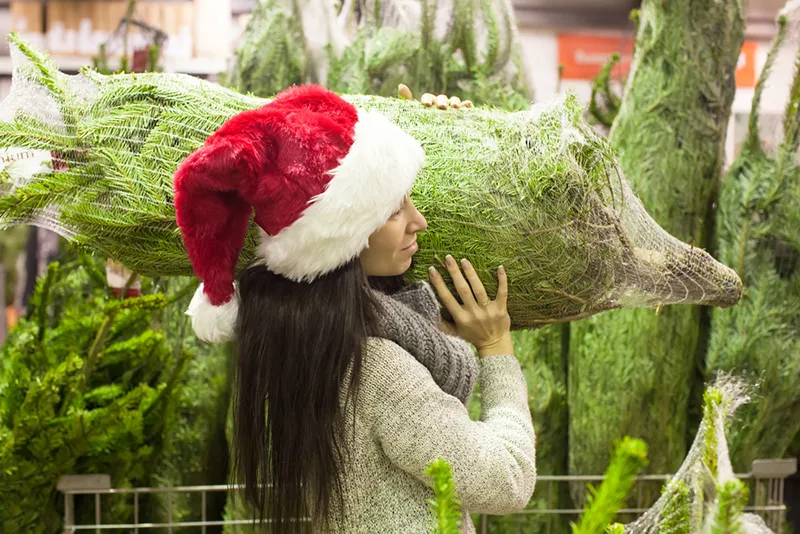
When embarking on the joyful journey of selecting your Christmas tree, certain positive attributes stand out as indicators of a healthy, vibrant, and long-lasting tree. Start by looking for a tree with a rich, vibrant green color, a hallmark of health and freshness. The needles should be glossy and flexible, springing back when gently bent between your fingers. This resilience is a good sign that the tree will retain its beauty throughout the holiday season. Additionally, check for uniformity in the tree’s shape. While natural imperfections are part of a tree’s charm, a symmetrically shaped tree with evenly distributed branches will provide a pleasing aesthetic and a sturdy foundation for your ornaments.
Needle retention is another critical factor. Gently grasp a branch and pull it towards you – the needles should remain firmly attached. This test ensures that your tree will not shed excessively, keeping your home tidy and the tree looking full and lush. A healthy tree will also have a fragrant, piney aroma, adding to the sensory delights of the season. Examine the trunk of the tree as well; a straight and sturdy trunk is easier to secure in your stand and often indicates overall tree health. Lastly, the freshness of the tree can also be ascertained by observing the sap – a sticky, resinous substance at the base of the trunk suggests a recently cut and healthy tree. By focusing on these positive attributes, you can select a Christmas tree that not only brings beauty to your holiday decor but also embodies the vitality and joy of the season.
Christmas Tree Farms vs. Big Box Stores
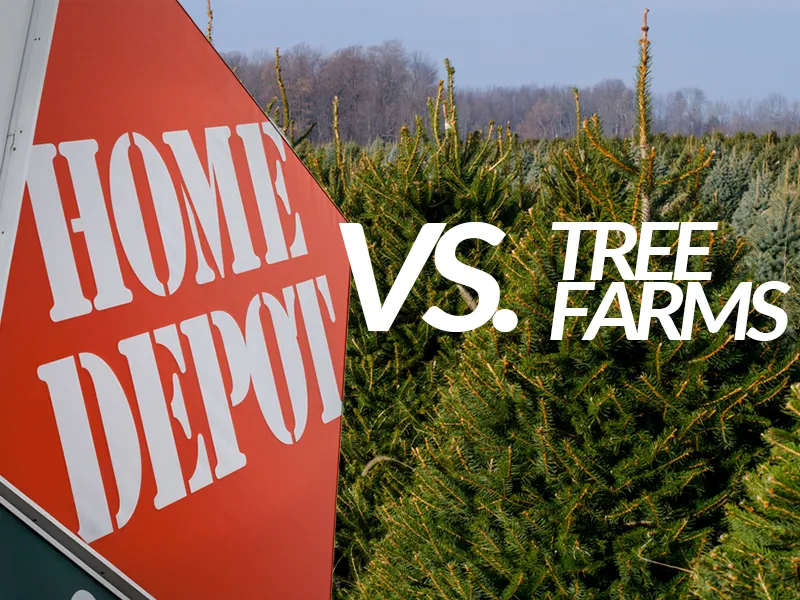
Purchasing a Christmas tree from a tree farm rather than a pop-up vendor or a big-box store offers several distinct benefits, contributing to both the quality of the tree and the overall holiday experience. One of the primary advantages is freshness. Trees at a farm are often cut closer to the time of sale, ensuring they retain their needles longer and stay green and vibrant throughout the season. This freshness not only enhances the aesthetic appeal of the tree but also reduces the risk of fire hazards associated with dry, brittle trees. Furthermore, tree farms typically offer a wider variety of species, sizes, and shapes, giving customers a more personalized and diverse selection to choose from. This variety means you can find a tree that perfectly fits your space and aesthetic preferences, something that might be limited at a pop-up vendor or a big-box store.
Another significant benefit of buying from a tree farm is the environmental aspect. Tree farms cultivate their trees sustainably, planting new seedlings each year to replace those that are cut. This practice contributes to a healthier environment, as these farms become valuable ecosystems for wildlife and help in carbon sequestration. Additionally, by supporting local tree farms, you’re contributing to the local economy and small businesses, which often have a direct and positive impact on the community.
Lastly, the experience of visiting a tree farm can be a cherished family tradition. The act of walking through a farm, selecting, and even cutting your tree adds to the festive spirit of the season. It’s an experience that pop-up vendors and big-box stores simply cannot replicate. This family outing often includes additional activities and amenities offered by farms, such as hayrides, hot cocoa stands, and holiday crafts, making it a memorable and enjoyable family event beyond just the purchase of a tree. In summary, buying a Christmas tree from a tree farm offers the advantages of freshness, variety, environmental sustainability, support for local businesses, and a unique and festive holiday experience.
Christmas Tree Farms on Google for Monmouth County, NJ
Size and Placement: Getting It Just Right
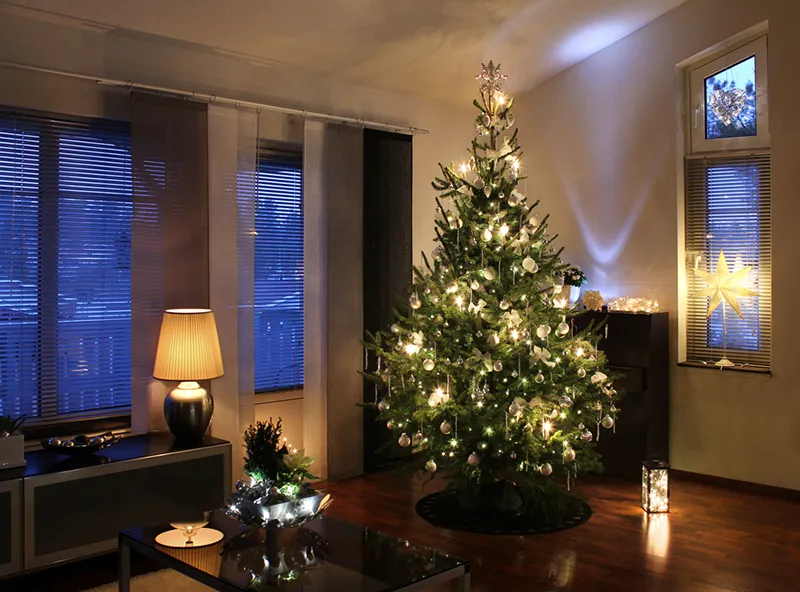
When it comes to selecting the perfect Christmas tree, size and placement are crucial aspects that can significantly enhance the festive ambiance of your home. It’s essential to choose a tree that not only fits beautifully in your space but also complements it. Start by measuring the height of the room where you plan to display the tree, keeping in mind to leave adequate space for a tree topper and the stand. For instance, if your ceiling is 8 feet high, a 6 to 7-foot tree would be ideal. Additionally, consider the width of the area to avoid a tree that feels too cramped or overwhelmingly large. It’s about finding that perfect balance that fills your space with holiday cheer without dominating it. Also, think about the tree’s proximity to furniture and walkways to ensure it doesn’t obstruct movement or everyday activities.
Beyond the dimensions, the placement of your Christmas tree is equally important. The tree should ideally be positioned in a spot that’s visible and enjoyed from different angles, yet not in a place where it could be a safety hazard. Avoid areas near heat sources like fireplaces or radiators, as they can dry out the tree faster and pose a fire risk. Similarly, placing the tree away from busy or high-traffic areas minimizes the risk of accidents or damage to the tree and ornaments. It’s also wise to consider access to an electrical outlet for the Christmas lights, avoiding the need for extension cords running across the room. By thoughtfully considering both the size and placement of your Christmas tree, you can create a safe, harmonious, and delightful focal point for your holiday celebrations.
Christmas Tree Red Flags To Avoid

In your quest for the perfect Christmas tree, it’s important to be mindful of certain red flags that could indicate a tree is past its prime. One of the most obvious signs of an aging or poorly maintained tree is excessive needle loss. When you gently shake the tree or run your hand along a branch, a few falling needles are normal, especially near the tree’s interior. However, if a significant amount falls off, this suggests the tree is too dry and won’t last through the season. Another indicator to watch out for is the overall appearance and texture of the needles. They should be vibrant and flexible, not dry, brittle, or dull. If the needles easily snap or crumble when bent, it’s a clear sign that the tree is not fresh.
Furthermore, pay attention to the tree’s color and smell. A healthy Christmas tree should have a rich green hue without extensive brown or yellow patches, which often indicate disease or dehydration. The scent of the tree is also telling; a fresh tree will have a pleasant, piney aroma. An unpleasant odor or lack of scent altogether can be a warning sign. Additionally, inspect the tree’s branches and trunk. Sparse branches, especially towards the bottom, or a trunk that is split or excessively knotted, may suggest that the tree has undergone stress or damage. Finally, be vigilant for signs of pests or insects, which can not only harm the tree but also become an unwelcome addition to your home. By keeping an eye out for these red flags, you can ensure that the tree you bring into your home is healthy, safe, and capable of sustaining the festive spirit throughout the holiday season.
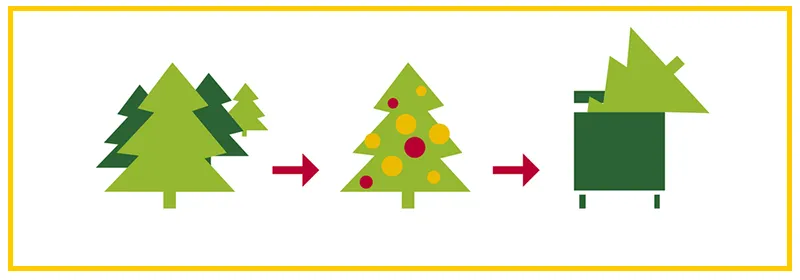
Caring For Your Christmas Tree
Caring for your Christmas tree is essential to maintain its beauty and ensure it remains a vibrant centerpiece throughout the holiday season. Once you’ve selected the ideal tree and placed it in your home, the first step is to cut about half an inch off the base of the trunk. This fresh cut helps the tree absorb water more efficiently. It’s crucial to place the tree in water as soon as possible, ideally within a few hours of making the cut. Use a sturdy stand that can hold at least one gallon of water, as a freshly cut tree can consume a surprising amount of water, especially in the first few days. Regularly check the water level daily and ensure that the base of the tree is always submerged. This practice prevents the needles from drying out and dropping prematurely, keeping your tree lush and green.
Temperature control is another vital aspect of tree care. Keep the tree away from direct heat sources like fireplaces, radiators, and heating vents. Excessive heat can not only dry out your tree but also pose potential fire hazards. If possible, lower the room temperature where the tree is placed; cooler temperatures will slow down the drying process, extending the life of your tree. When it comes to lighting, opt for LED Christmas lights, which emit less heat than traditional bulbs, reducing the drying effect on the tree. Additionally, turning off the lights when you go to bed or leave the house can further help to conserve energy and reduce any risk of fire.
Lastly, as the holiday season winds down, plan for the disposal of your tree in an environmentally friendly way. Many communities offer recycling programs that turn your tree into mulch or wood chips for public use. By following these care tips, you ensure that your Christmas tree remains a beautiful, safe, and eco-friendly addition to your holiday festivities.
Schedule Your Seasonal Tree Service
Call Now To Schedule Service
